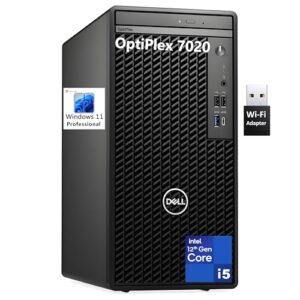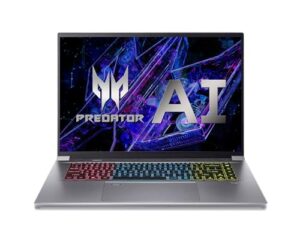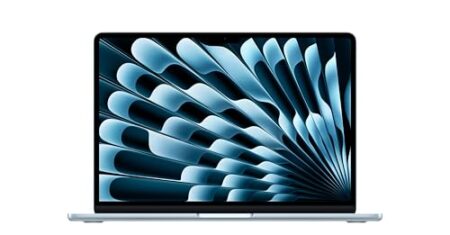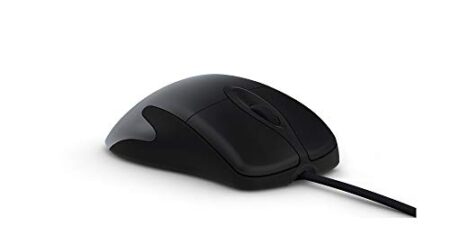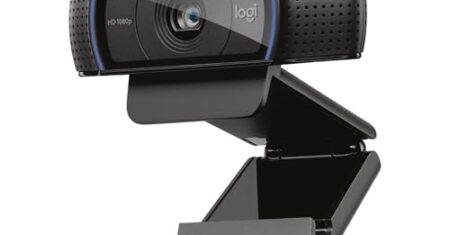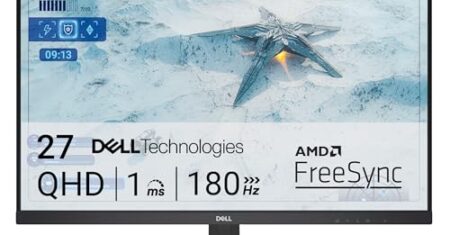Best Laptop for Architecture in 2025 (Top 10: Razer Blade, Samsung Galaxy and More)
Last Updated on August 26, 2025
Find the best laptop for architecture. Discover the best models for design and rendering, with the performance and essential features for professionals and students.
In the world of architecture, the right laptop can be the difference between a soaring success and a crashing failure. You need a device that not only handles complex software but also keeps up with your creative flow. With architecture becoming more digital and demanding, having a laptop with serious horsepower is no longer a luxury—it’s a necessity!
Imagine designing a stunning building model while your laptop is more like a patient assistant than a hindrance. Enter the best laptops, each one ready to transform your architectural visions into reality. Whether you’re drafting blueprints or rendering 3D models, these machines are crafted to support your every step—so you can focus on building your dreams!
Contents
- The Best Laptop for Architecture
- MSI Titan 18 HX AI Laptop
- Apple MacBook Pro 2024
- Lenovo Legion Pro 7i
- Microsoft Surface Laptop Studio 2
- HP ZBook Firefly G11
- Dell XPS 15 9530 Laptop
- Samsung Galaxy Book4 Pro
- Acer Predator Helios Neo 16
- ASUS ROG Zephyrus G16
- Razer Blade 15 Base Laptop
- Final Thoughts on the Best Laptop for Architecture
- How to Choose the Best Laptop for Architecture
- Check Out the Best Laptop for Architecture
- Also Check Out Other Helpful Articles
- Video About the Best Laptop for Architecture
The Best Laptop for Architecture










MSI Titan 18 HX AI Laptop
The MSI Titan 18 HX is unparalleled in terms of power and performance, making it ideal for high-end architectural design work and gaming. It is designed for those who demand the best from their technology.
Advantages
- Incredible processing power
- Massive storage capacity
- Stunning display quality
Drawbacks
- Very expensive
- Heavy and bulky
- Shorter battery life under load
The MSI Titan 18 HX is the epitome of power in the laptop world, designed for serious gamers and professionals alike. Featuring an Intel Ultra 9-285HX processor and NVIDIA GeForce RTX 5090 graphics, it can tackle the most demanding design software with ease.
Key Features:
- Display: The 18-inch MiniLED UHD+ screen offers a resolution of 3840 x 2160, providing exceptional detail and color accuracy for architectural renderings.
- Storage: With 64GB DDR5 RAM and a staggering 6TB NVMe SSD, you’ll have more than enough power and storage for your projects.
- AI Features: The laptop includes AI-powered performance optimization, ensuring that you get the most out of your hardware no matter the task.
While it's one of the most expensive options on the market, the Titan 18 HX provides unmatched performance, making it a worthwhile investment for those in the architecture field who need the best technology available.
Apple MacBook Pro 2024
The Apple MacBook Pro with M4 Pro is the ultimate tool for architects seeking performance and efficiency. Its superior hardware and seamless integration with macOS make it a top contender.
Advantages
- Exceptional battery life
- Stunning Retina display
- Seamless integration with Apple ecosystem
Drawbacks
- Higher price point
- Limited upgrade options
- May have a learning curve for new users
The Apple MacBook Pro 2024 is designed for creatives and professionals who demand the best from their technology. Featuring the new M4 Pro chip, it boasts a 14-core CPU and a 20-core GPU, delivering incredible speed and graphics performance for architectural software and rendering tasks.
Key Features:
- Display: The 16.2-inch Liquid Retina XDR display provides stunning visuals with up to 1600 nits brightness, perfect for detailed design work.
- Memory and Storage: With 24GB of unified memory and 512GB SSD storage, this MacBook can handle multiple demanding applications simultaneously without any lag.
- Battery Life: It offers all-day battery life, ensuring you can work on projects without constantly searching for an outlet.
While the price may be a concern for some, the performance and quality of the MacBook Pro make it a worthwhile investment for serious architecture professionals. Its ability to run demanding software efficiently is a significant advantage.
Lenovo Legion Pro 7i
The Lenovo Legion Pro 7i combines gaming power with robust performance, making it suitable for architecture students who also enjoy gaming. Its advanced cooling system keeps performance high during intense tasks.
Advantages
- High refresh rate display
- Excellent thermal management
- Powerful GPU for graphics-intensive tasks
Drawbacks
- Heavy design
- Battery drains quickly under load
- Pricey compared to non-gaming laptops
The Lenovo Legion Pro 7i is a formidable gaming laptop that offers impressive specs tailored for architecture and design work. With an Intel Core Ultra 9 275HX processor and NVIDIA GeForce RTX 5070 Ti graphics, this laptop is built to handle the most demanding tasks, from 3D modeling to rendering.
Key Features:
- Display: The 16-inch WQXGA OLED display with a 240Hz refresh rate ensures smooth visuals and vibrant colors, ideal for detailed design work.
- Cooling System: Equipped with advanced cooling technology, the Legion Coldfront keeps the laptop cool even during extended gaming sessions or heavy software use.
- Gaming Features: Comes bundled with a 3-month subscription to PC GamePass, offering access to a vast library of games for those downtime moments.
While it may be on the heavier side and has a shorter battery life under load, the Legion Pro 7i is a fantastic choice for those who need a powerful machine for both work and play.
Microsoft Surface Laptop Studio 2
The Microsoft Surface Laptop Studio 2 is a versatile 2-in-1 device that excels for architects needing touchscreen functionality and powerful specs in a sleek design.
Advantages
- Excellent touchscreen capabilities
- Versatile design
- Powerful performance
Drawbacks
- Limited upgrade options
- Price can be high
- Battery life under heavy use
The Microsoft Surface Laptop Studio 2 is a versatile touchscreen laptop that combines a sleek design with powerful performance, making it ideal for architects. Featuring an Intel Core i7 13th Gen processor, 16GB of RAM, and a 512GB SSD, it handles demanding design software with ease.
Key Features:
- Display: The 14.4-inch touchscreen with a resolution of 2400 x 1600 allows for precise interactions, making it perfect for sketching and design work.
- Convertible Design: Its unique floating slider design lets you switch between laptop, stage, and studio modes, enhancing productivity for different tasks.
- Microsoft Integration: Seamless integration with Windows and Microsoft Office makes it a practical choice for professionals.
While the price might be a concern, the Surface Laptop Studio 2 offers versatility and power, making it a worthwhile investment for architects and creative professionals.
HP ZBook Firefly G11
The HP ZBook Firefly G11 is a mobile workstation that delivers impressive performance in a compact design, making it perfect for architects who need to work on the go.
Advantages
- Lightweight and portable
- Powerful performance for its size
- Good battery life
Drawbacks
- Limited graphics capabilities
- Fewer ports than competitors
- Mediocre display brightness
The HP ZBook Firefly G11 is designed for professionals who require a powerful and portable workstation. With an Intel Ultra 7 155U 12-core processor and 64GB of DDR5 RAM, it is capable of handling demanding architectural applications seamlessly.
Key Features:
- Display: The 14-inch IPS WUXGA screen provides good clarity and color accuracy, although it might not be as bright as some competitors.
- Storage: A 1TB SSD allows for ample storage of files and applications, ensuring that you can work without delays.
- Compact Design: Weighing just 3 pounds, it is easy to carry around, making it ideal for professionals who are always on the move.
While it might not have the most robust graphics capabilities compared to other models, the ZBook Firefly G11 is an excellent choice for professionals looking for a reliable and powerful portable workstation.
Dell XPS 15 9530 Laptop
The Dell XPS 15 9530 is a powerhouse designed for architecture students and professionals alike. With its high-performance specs and sleek design, it delivers exceptional performance for demanding applications.
Advantages
- Powerful Intel i7 processor
- High-quality build and design
- Excellent display quality
Drawbacks
- Heavier than some competitors
- Battery life could be better
- Pricey for some budgets
The Dell XPS 15 9530 is a top-of-the-line laptop that caters perfectly to the needs of architects and designers. This machine is equipped with a 13th Gen Intel i7-13620H processor, 32GB of DDR5 RAM, and a 1TB SSD, which ensures lightning-fast performance and ample storage for large architectural files.
Key Features:
- Display: The 15.6-inch FHD+ screen with a resolution of 1920 x 1200 pixels provides vibrant colors and sharp details, ideal for design work.
- Graphics: Powered by Intel Iris Xe Graphics, it can handle 3D modeling software with ease.
- Design: With a premium aluminum chassis, the laptop not only looks stunning but is also durable enough for daily use.
Despite its impressive features, some users note that the laptop can be a bit heavy for prolonged use and the battery life may not last through a full day of intense tasks. Nevertheless, if you are looking for a laptop that combines style with serious computing power, the Dell XPS 15 9530 is an excellent choice.
Samsung Galaxy Book4 Pro
The Samsung Galaxy Book4 Pro combines portability with solid performance, making it a great choice for architecture students who are always on the move.
Advantages
- Lightweight and portable
- Good display quality
- Decent performance for everyday tasks
Drawbacks
- Limited gaming capabilities
- Battery life may vary under load
- Fewer ports than competitors
The Samsung Galaxy Book4 Pro is designed for professionals who value portability without sacrificing performance. Equipped with an Intel Core Ultra 7 processor and 16GB of RAM, it is capable of handling everyday architecture tasks and productivity applications with ease.
Key Features:
- Display: The 16-inch AMOLED display with a resolution of 3840 x 2160 provides vibrant colors, making it ideal for design work.
- Lightweight Design: Weighing only 3.44 pounds, it’s easy to carry around, making it perfect for students and professionals on the go.
- Storage: A 1TB SSD provides ample space for files and applications, ensuring you always have what you need at your fingertips.
While it may not be the best option for heavy gaming or intensive graphical tasks, the Galaxy Book4 Pro offers a well-rounded experience for architecture students who need a reliable and portable laptop.
Acer Predator Helios Neo 16
The Acer Predator Helios Neo 16 offers solid performance for both gaming and design at an affordable price, making it a great option for students.
Advantages
- Powerful performance for price
- Good display quality
- Great for gaming and design tasks
Drawbacks
- Heavier than some options
- Fan noise can be noticeable
- Limited battery life
The Acer Predator Helios Neo 16 is an excellent budget-friendly gaming laptop that doubles as a capable design machine for architecture students. With an Intel Core i7-13650HX processor and NVIDIA GeForce RTX 4060, it provides ample power for demanding applications without breaking the bank.
Key Features:
- Display: The 16-inch WUXGA screen with a 165Hz refresh rate ensures smooth visuals, ideal for both gaming and design projects.
- Cooling System: Equipped with advanced cooling technology, it manages heat effectively, allowing you to work or play without throttling.
- Connectivity: Multiple ports, including USB-C and HDMI, provide flexibility for connecting external devices.
While the battery life could be better and the laptop can be heavy, it offers great value for those looking for a capable machine that can handle both work and play.
ASUS ROG Zephyrus G16
The ASUS ROG Zephyrus G16 excels in both gaming and design, making it a solid choice for architecture students. Its powerful hardware ensures smooth performance across various applications.
Advantages
- Excellent display quality
- Lightweight and portable
- High-performance GPU
Drawbacks
- Fan noise can be loud
- Limited service options
- Battery life could be better
The ASUS ROG Zephyrus G16 is a gaming laptop that stands out for its ability to also handle intensive design software effectively. With a Core Ultra 9 185H processor, 16GB of RAM, and a 2TB SSD, it offers ample power for 3D modeling and rendering tasks.
Key Features:
- Display: The 16" 2.5K OLED display features a 240Hz refresh rate, ensuring that graphics are crisp and animations are fluid, which is essential for design work.
- Design: At just 0.65 inches thick and weighing 4.08 pounds, this laptop is portable enough to carry around for classes and meetings.
- Battery Life: While the battery life may not last a full day under heavy use, it charges quickly and is adequate for usage in short bursts.
Overall, the Zephyrus G16 is a versatile option for architecture students who want a powerful laptop capable of handling both gaming and professional applications.
Razer Blade 15 Base Laptop
The Razer Blade 15 Base is a compact and stylish laptop that excels in gaming and design tasks. Its sleek design and solid performance make it a great choice for architects on the go.
Advantages
- Compact and portable
- Strong gaming performance
- High-quality build
Drawbacks
- Limited battery life
- Average speakers
- Can get hot during use
The Razer Blade 15 Base is a powerful gaming laptop that also meets the demands of architecture software. It’s powered by a 10th Gen Intel Core i7-10750H processor with NVIDIA GeForce RTX 2060 graphics, ensuring smooth performance for both gaming and intensive design tasks.
Key Features:
- Display: With a 15.6-inch FHD 144Hz display, you can expect vibrant colors and smooth visuals, perfect for detailed design work.
- Build Quality: The aluminum chassis not only looks sleek but also adds durability, making it a reliable option for students and professionals.
- Connectivity: Equipped with multiple ports, including Thunderbolt 3, it offers flexibility for connecting external devices.
However, the battery life is a drawback, especially for heavy tasks, and the laptop can become warm under load. Still, the Razer Blade 15 is a solid choice if you want a blend of gaming and professional capabilities.
Final Thoughts on the Best Laptop for Architecture

For architects who crave POWER and PERFORMANCE, the MSI Titan 18 HX AI Laptop is your go-to choice. With its staggering capabilities, it’s built to tackle the most demanding tasks—perfect for high-end architectural projects. However, if you’re looking for a seamless blend of efficiency and top-notch performance, the Apple MacBook Pro 2024 with the M4 Pro chip stands tall. It’s particularly ideal for those who work in a macOS environment and want to maximize their productivity without compromise.
How to Choose the Best Laptop for Architecture
Selecting the best laptop for architecture requires more than just checking the brand or design. Architecture students need machines that can handle heavy software like AutoCAD, Revit, Rhino, SketchUp, Lumion, and Adobe Creative Suite. Performance, graphics, storage, display quality, and portability are key. Here's a detailed guide to help you make the right choice.
Best Laptop For Music Production
Prioritize a Compatible and Efficient Operating System
While many architecture programs run on Windows, especially Autodesk and other 3D modeling tools, macOS is also suitable for certain workflows, particularly those focused on Adobe Creative Cloud. However, some software may have limited compatibility or performance on macOS.
If you're committed to using architecture software that is Windows-only, make sure your laptop runs Windows 10 or 11. Windows offers broad compatibility, driver support, and flexibility for upgrades.
Some professionals in the field also dual-boot with Linux, but for students, sticking with Windows or macOS ensures fewer compatibility issues.
A High-Quality Display Is Essential for Design Work
For architecture students, the screen is critical. Detailed visuals, color accuracy, and resolution directly impact how effectively you can design and review your work.
- Size: A screen between 15.6” and 17” is often ideal for detailed designs and multitasking. Smaller screens are lighter but may hinder productivity in modeling software.
- Resolution: Go for at least Full HD (1920 x 1080). If possible, upgrade to 4K for better detail and precision when rendering or editing.
- Color Accuracy: Look for displays with 100% sRGB or better for accurate color rendering, crucial for visualization and client presentations.
- Touchscreen or 2-in-1: Not essential, but useful for sketching if the laptop supports a stylus.
Choose a Powerful Processor for Heavy Software
Architecture applications demand a powerful CPU to manage rendering, simulations, and multitasking.
Here are the top choices:
- Intel Core i7 or i9 (11th Gen or later): High performance for multitasking and rendering-heavy workflows.
- AMD Ryzen 7 or 9: Excellent performance, often at a better price-to-power ratio than Intel.
- Apple M1 Pro / M2 Pro or higher: Best suited for macOS users, offering impressive performance and energy efficiency for creative work.
Avoid entry-level processors like Intel Celeron or Core i3—they won't handle demanding software efficiently.
Dedicated Graphics Cards Are a Must
The graphics processing unit (GPU) is vital when working with 3D models, real-time rendering, and architectural visualization.
Recommended GPUs:
- NVIDIA GeForce RTX 3060, 3070, or higher: Excellent for rendering and VR support.
- NVIDIA Quadro series: Professional-grade GPUs optimized for CAD and 3D modeling applications.
- AMD Radeon RX series: Capable for architecture workloads, though software optimization may vary.
Integrated GPUs (e.g., Intel UHD or Iris Xe) are not sufficient for architecture students due to limited processing power in rendering tasks.
Minimum 16GB of RAM for Seamless Workflow
For architecture work, 16GB of RAM is the minimum recommendation. This allows for smooth multitasking between software like Revit, Photoshop, and Rhino.
- 32GB of RAM is ideal for working with large files, high-resolution rendering, or running multiple professional tools simultaneously.
- Ensure your laptop has upgradeable RAM if you're buying a model with 16GB or less.
Choose Fast and Sufficient Storage
Storage affects both the speed and space for projects, software, and renderings.
- SSD (Solid State Drive): A minimum of 512GB SSD is recommended. This ensures fast boot times, quick loading of heavy files, and smoother performance.
- If you need more space, consider a secondary HDD or external drive for archiving.
Avoid laptops with only eMMC or small SSDs (128GB), as they will fill up quickly and slow down performance.
Battery Life Is Less Critical—but Portability Still Matters
Most architecture software is power-intensive, often used while plugged in due to high performance demands. Still, decent battery life is helpful for note-taking, presentations, or travel.
- Aim for at least 5–6 hours of battery life for general usage.
- Weight matters if you carry your laptop daily. Models with 15.6” screens usually weigh around 4–5 lbs (1.8–2.3 kg). Lightweight builds with high performance are ideal but may be more expensive.
Additional Features to Consider
- Cooling system: Architecture workloads can heat up machines quickly. Good thermal management is essential to maintain performance and avoid throttling.
- Build quality: Choose a durable chassis (aluminum or magnesium alloy) if you frequently travel or attend studio classes.
- Ports: Ensure the laptop has multiple USB-C, HDMI, SD card slots, and other connectivity options for external displays, drawing tablets, or storage devices.
By choosing the right laptop tailored to architecture students' unique needs, you'll be able to work more efficiently, present your ideas with clarity, and enjoy a smoother educational experience.
Check Out the Best Laptop for Architecture
Still not sure which one to choose? Click the link below to see the best-selling products.
Also Check Out Other Helpful Articles
Take a look at more useful articles that can help you make more informed decisions.
- Best Dell Desktop in 2025 (Top 10: i7, OptiPlex and More)
- Best i5 Laptop in 2025 (Top 7: Dell, HP, and More)
- Best Laptop That Runs Minecraft in 2025 (Top 10: LOQ, Predator Triton and More)
Video About the Best Laptop for Architecture
We created a video on the topic. Just click to watch.
About the Author
